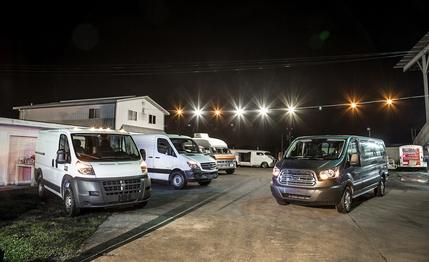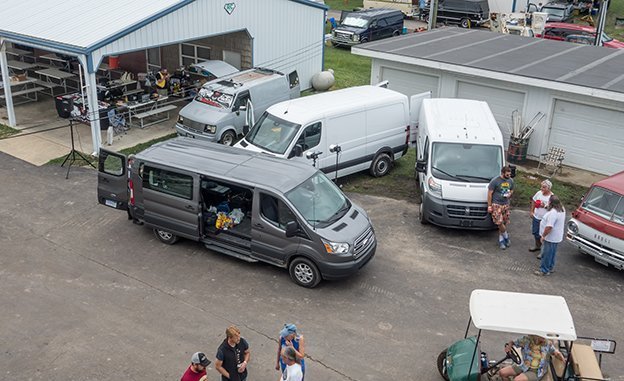
 Comparison Tests
From the October 2015 issue
Comparison Tests
From the October 2015 issue
We didn’t drive three full-size modern vans 430 miles just to gain admittance to the 43rd annual Van Nationals. We also drove them there (with a dorm room’s worth of furniture from IKEA) so we’d have a place to sleep away our drunkenness.
Oh, right, and also to perform a comparison test of the newest big boys. After what seemed like a century of incremental improvements to the old-school American vans, our market is now awash with new European-derived big boxes, as well as little-sibling versions. We chose three of the new plus-size van-guard: the Mercedes-Benz Sprinter (now in its second generation here in the U.S.), the new-to-America Ford Transit, and a curious-looking thing called the Ram ProMaster. For the sake of intensified Euro-ness, we chose turbo-diesel engines as the exclusive power source.

 Vans for the 98-percenters.
Vans for the 98-percenters.
This choice effectively knocked Nissan’s NV2500 out of our test, since the company offers only gasoline V-6s and V-8s in its big hauler. Chevrolet has dropped its light-duty full-size Express van because it was dragging down the company’s fuel-economy average. Heavy-duty versions are still available, but the Express was deemed too out of step with the modern vans to include anyway.
We specified windowless cargo versions of each entrant because they seemed somehow more in step with the custom vans we expected to encounter at the Nationals. Also, we weren’t running a shuttle service, and we didn’t want people looking through the windows at us as we snored. And then the Ford showed up with windows anyway. We chose low-roof models to diminish the commercial-van look (fat chance!), and no dualies or four-wheel-drive or super-extended models were allowed. The idea was to make them, as much as possible, candidates for modern van customizers. Not that any of the vanners seemed to differentiate much between them. But we did.